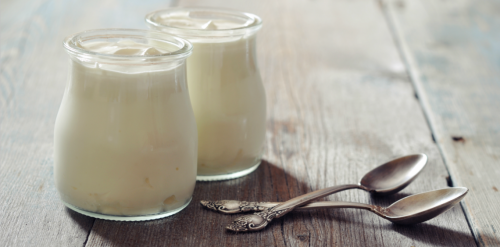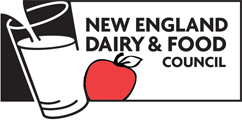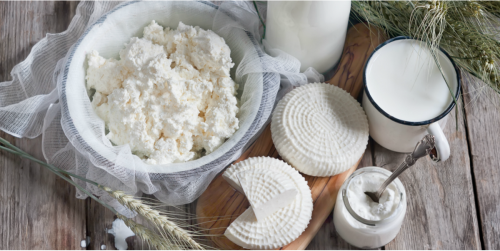When almonds and avocados became popular everyday items thanks to their whole food and natural allure, it was only a matter of time that whole fat dairy became a part of the conversation. We’ve memorized the low-fat and non-fat dairy messaging, so do we now jump on the whole foods bandwagon? Or tread lightly?
In this blog post, you’ll learn about:
- What the 2015-2020 Dietary Guidelines for Americans recommends
- Saturated fat’s place in the diet
What do the Dietary Guidelines Recommend?
Every five years the Dietary Guidelines for Americans are updated to reflect advances in the nutritional research. Compared to previous editions, the most recent guidelines shifted towards user-friendly messaging:
- Focus on eating foods, not nutrients
- Follow one of three suggested meal patterns
- Opt for 2½ to 3 daily servings of dairy
- Consume no more than 10-percent of total calories from saturated fat
Per the guidelines, one “dairy equivalent” equals:
- An 8-ounce glass of milk
- An 8-ounce cup of yogurt
- 1½ ounces of hard cheese, ½ cup of shredded cheese, or 2 cups of cottage cheese
Each serving size of dairy provides 300 milligrams of calcium and, depending on the product and personal preference, variable amounts of saturated fat.
How to Talk About Saturated Fat
Foods containing the highest saturated fat levels include animal products, the palm fruit, and coconut. Current research is debating the saturated fat group and its impact on raising “bad” cholesterol (i.e., LDL-cholesterol) versus the potential benefits of certain fatty acids within the saturated fat group. Saturated fat could be wildly different depending on how we evaluate it.
For instance, from a distance we may judge a dirty, second-hand car as being broken down. However, if we lift up the hood and see a souped-up engine we have a different opinion of how great that car may be. The latter is what the fatty acid profile of dairy may reveal itself to be.
Secondly, we need to consider saturated fat as being an integral part of foods. All foods containing fat also contain saturated fat.
For instance:
- An ounce of peanuts has 2.3 grams of saturated fat
- Half an avocado has 2.2 grams of saturated fat
- An 8-ounce glass of coconut milk has 4.5 grams of saturated fat*
As a comparison, an 8-ounce glass of whole or homogenized milk has 4.6 grams. Based on a 2,000-calorie daily diet, the less than 10-percent of calories from saturated fat recommendation is equal to 20 grams. So based on the Guidelines, any of the previously-mentioned foods and beverages fit within the 20-gram limit.

Should I Eat or Avoid Saturated Fat?
The only way to avoid saturated fat is to avoid all fat, which isn’t recommended. Fat is present across all food groups, including produce, whole grains, nuts, dairy, meat, poultry, eggs—you name it! These groups also contain heart-healthy fiber, vitamins, and minerals. Plus, we need dietary fats to absorb the fat-soluble vitamins A, D, E, and K.
Consider these tips:
- Since saturated fat is present in both plant and animal foods, focus more on the nutrient package of the entire food item or beverage.
- Saturated fat intake needs to be considered across your entire eating pattern. If you choose an item with a high level of saturated fat, consider what else you’re eating at that meal and throughout the day.
- Be flexible with your choices by keeping the 20 grams of saturated fat in mind, and build your meals around fruits, vegetables, whole grains, and protein.
The Final Ruling (Until 2020)
Lastly, remember that nutrition science is a young field and as the research tools become better—just like that of new and improved cell phones—so does our understanding of nutrition. For now, the Guidelines recommend choosing low-fat and non-fat dairy products more often. Let’s see what the 2020-2025 Guidelines have in store!
Last updated March 22, 2017


